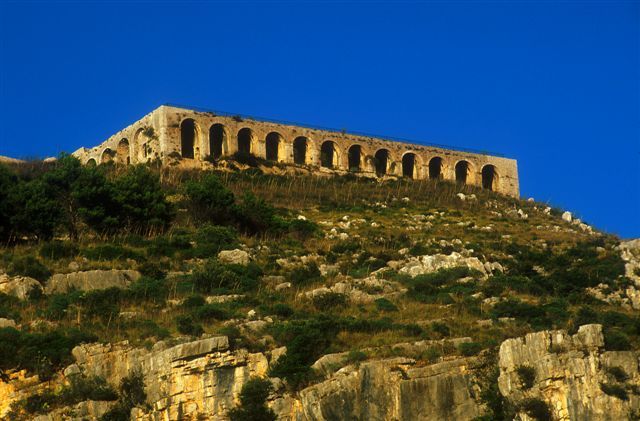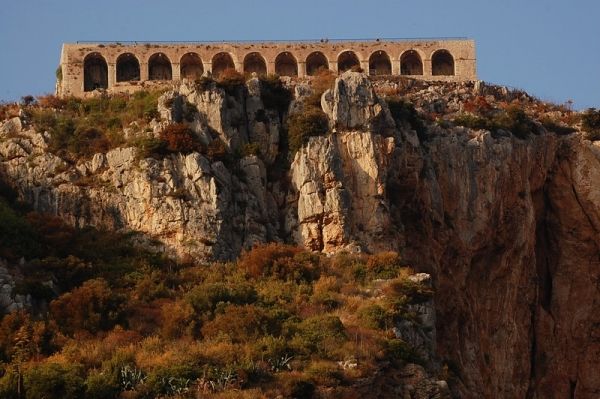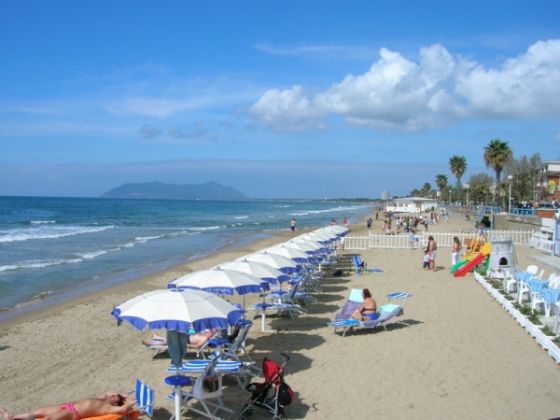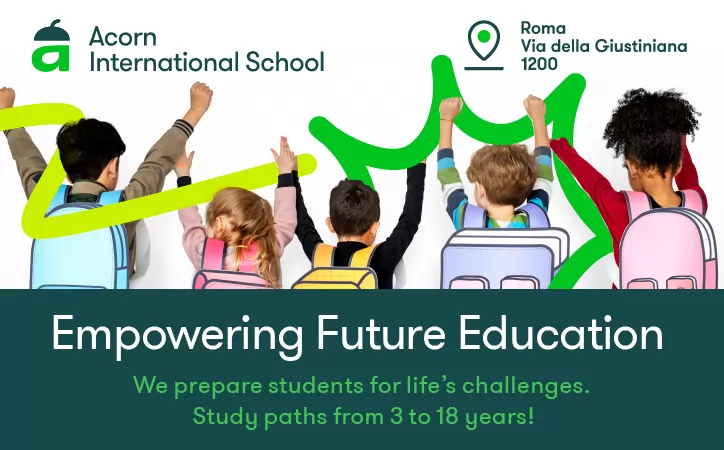The coastal town of Terracina is within easy reach of Rome.
The imposing ruins of the ancient Temple of Jove Anxur tower high over the fishing port of Terracina. From there you get a breathtaking view that sweeps over the Riviera of Ulysses from the Circeo peninsula to Gaeta. Across the sea, the Pontine Islands bob mistily on the far horizon and, if it’s a really clear day, you can also make out Vesuvius and the blue outlines of Ischia and Procida off the Sorrento coast. Behind you glimmers the coastal lake of Fondi and the surrounding plain, densely covered with olives and orange groves and various cultivations.
You can walk or drive up Monte S. Angelo, as the temple hill has been called since Christian times. The summit with the archaeological remains, however, is laid out as a park, with winding footpaths leading up to the temple terrace on the old acropolis. There is a small entry charge to the enclosed area, where you can picnic under the shade of the olives and holm oaks, or you can purchase a snack at the Tempio di Giove café right at the top.
This café has been run by the Campi family for three generations and is one of the most romantic spots you can possibly imagine. Their visiting cards carry the slogan: “Where sky and sea unite under the stars”. In summer, in fact, it is open in the evenings, complete with live music and comfortable divans, where you can admire the moon reflected on the water below.

Terracina has an attractive new town on the level land around the port, but its true fascination lies in its old town, which rambles steeply up the hill beneath Monte S. Angelo. For many centuries it was a key strategic point on the Old Appian Way leading south from Rome to Capua and the signs of its former importance and prosperity are everywhere. The Romans captured it from the Volschi people, who had called it Anxur (hence the temle name) and hacked out the great rocky cutting, known as the Pisco Montano, to allow the Appia to pass along the coast.
The 38m-high split at the edge of town is Terracina’s most striking landmark. A section of the Old Appian Way runs along one side of the monumental main square of the old town, which was once the site of the Emilia Forum (named after local magistrate Aulus Aemiulius, whose name is inscribed on the still-intact original paving).
This square is like an open history book documenting the various phases of Terracina’s history. The modern town hall runs along one side, attached to the mediaeval Frumentaria (or grain) tower that incorporates an authentic little jewel of a museum containing a collection of Roman antiquities found in the area. The remains of the Roman theatre are scattered on the opposite side, alongside the Roman road.
The top end is enclosed by the old bishop’s palace (you can walk through the garden) and the magnificent romanesque cathedral, with its grand entry porch of ancient Roman granite columns and its mediaeval bell tower decorated with polychrome ceramic plates that gleam in the sun.

Down in the “modern” town (we’re talking about buildings dating mainly from the 18th-19th century) with its busy little fishermen’s harbour and port where ferries leave daily for the Pontine Islands, you can eat freshly caught fish at the fishermen's cooperative (Centro Ittico Cooperativa dei Pescatori) on the side of the navigation canal that snakes through the town centre. Local fishermen and their wives got together a few years ago and extended the premises of the fish market to create an informal self-service restaurant. The menu changes every day, according to the catch, and prices are very reasonable. Be warned that the place has become so popular that in summer you may have to queue.
Alternatively, you can try a couple of similar operations that have since sprung up, just round the corner.Terracina is virtually an oasis in the middle of the wild landscape of the Ausoni and Aurunci mountains. It only takes a short detour out of town to find yourself in another, primaeval world that has survived from the Mesozoic era. The vast karst plateau of Campo Soriano is only a few kilometres from Terracina (the road is signposted at the northern entrance to the town, branching off from the Via Appia).
A designated protected area since 1997, it extends over some three square kilometres, filled with the jumbled remains of a limestone bedrock stratum eroded over countless millennia, creating an environment of haunting beauty and mystery. The road leads through a surrealistic landscape of jagged rock formations that look as if they had been tossed around heedlessly by giants. Patches of meadow and vineyards pop up among sinkholes and caves.
An eight-kilometre hike or drive takes you to the symbol of the park, a towering 18m-high monolithic crag known as the “Cathedral” because of its pointed, gothic-like spires. local people, however, give it other names, such as the “Artichoke”, the “Pinnacle”, the “Rock Pyramid”, or the “Rava di S. Domenico” and attribute to it mysterious powers.
Terracina is 100 km south of Rome and can be reached by Via Appia (SS7) or Via Pontina.
Margaret Stenhouse
Useful contacts: Piano Bar Tempio di Giove, open all day and on summer evenings with live music: Monte S. Angelo, info & bookings, tel. 3392202865. Centro Ittico Cooperativa dei Pescatori di Terracina, Via lungolinea Pio VI, tel. 0773725905. For information on the Natural Monument of Campo Soriano, www.parks.it.
General Info
View on Map
Terracina: Between sea and sky
Terracina, Province of Latina, Italy


























